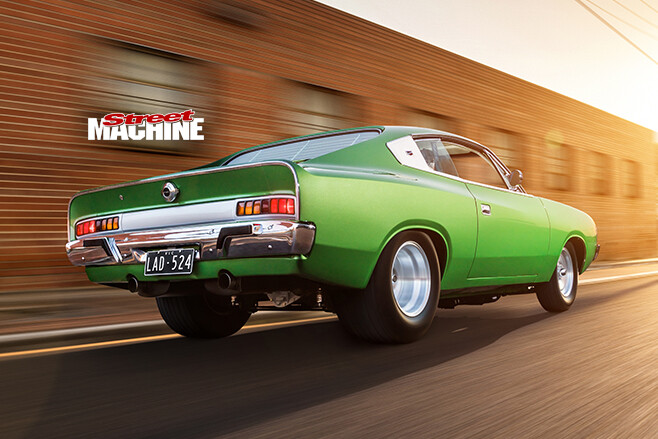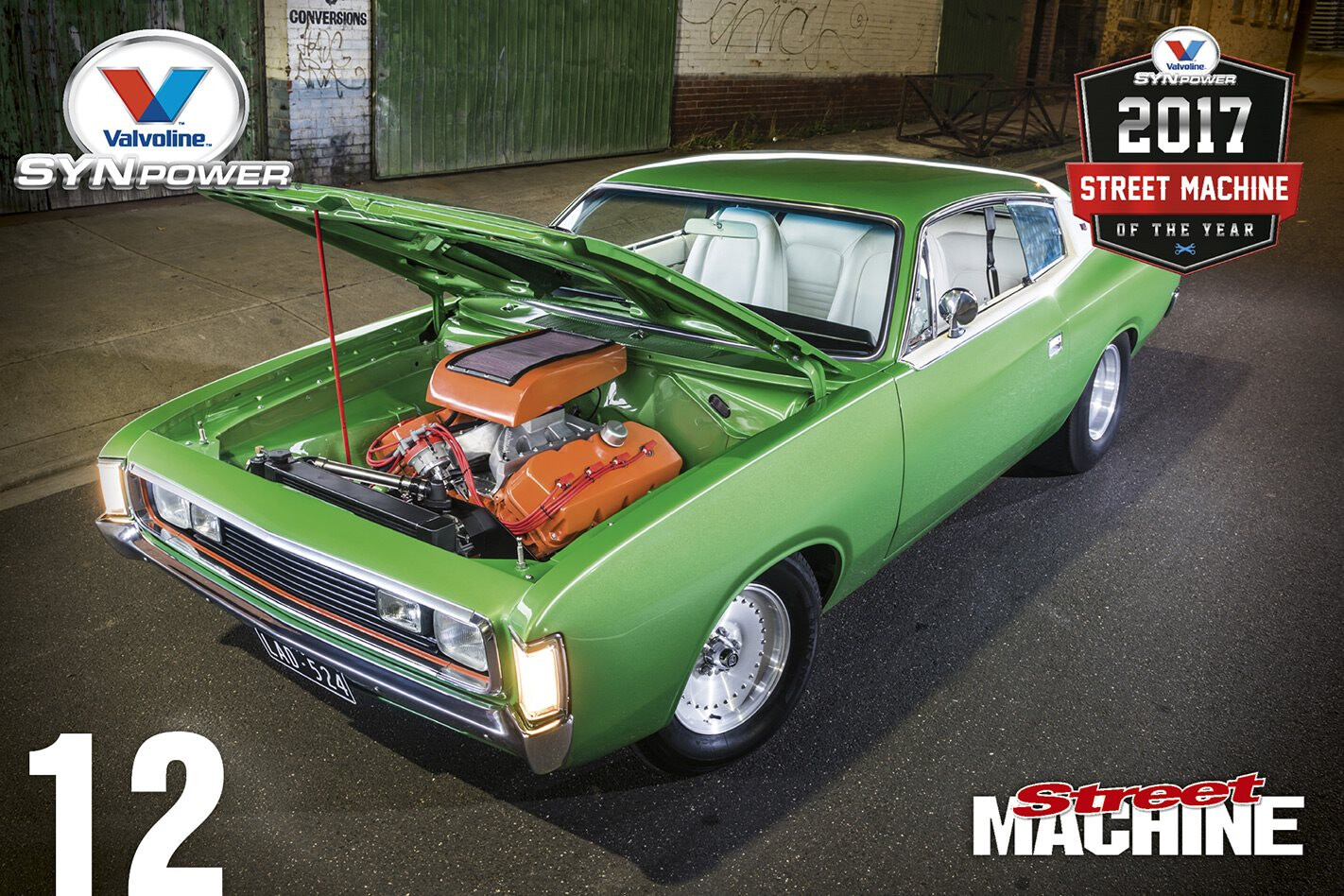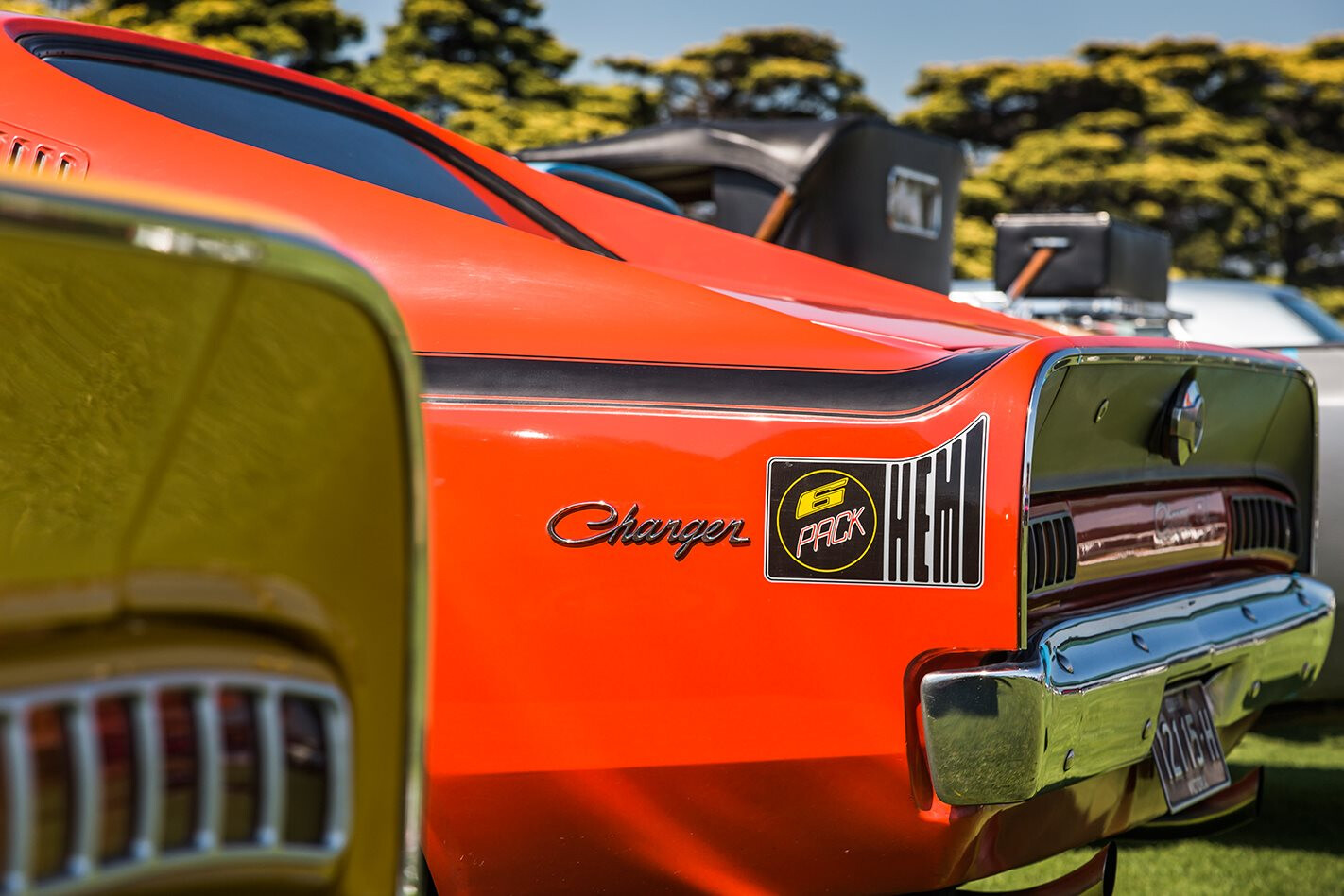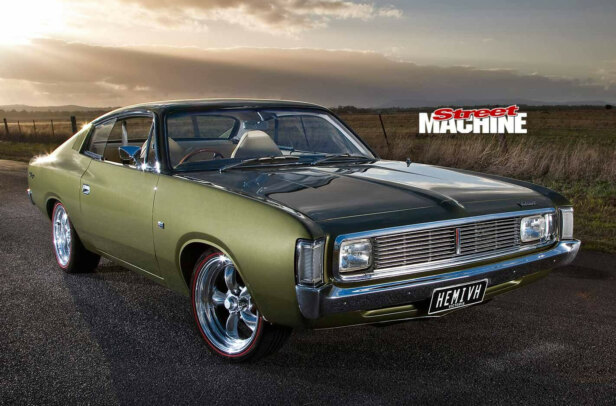Everyone loves a 265 Hemi, but they love a 426 even more, and that’s exactly what makes Frank Pana’s stunning VH Charger 770 get up and go
This article was originally published in the May 2017 issue of Street Machine
TO GIVE you an idea of how long this 770 Charger has been in Frank Pana’s life, he bought it well before he was old enough to hold a driver’s licence – and that was back in 1981. You gotta wonder how a teenage kid managed to get himself a roadworthy car – but Frank was clever. He worked as a pump jockey at a local servo and then went halves with his older brother. “We bought it together and then he got married two or three years later; I gave him some cash for the balance of the car and had it ever since,” he says. “At the time it was a built Hemi-six, modded with a four-barrel, headers and four-speed with the factory 770 trim.”
Of course, the car didn’t stay this way for long. As with most car-mad teenagers, Frank soon found the weak links in the driveline. “I drove it around with a hot six for a while, blew numerous gearboxes – as you do. When we first got the car it had a clapped-out factory BorgWarner auto that lasted two weeks. Then we sourced a three-speed, which lasted a few months, then another three-speed, which jammed up on me in the middle of Clayton Road and we had to drive it home in reverse at 2am in the morning. Good memories, eh?”
One of the sexiest shapes to ever come out of an Aussie car factory – that little kick up in the back is unique to the Charger and about as close as you got to a built-in spoiler in the 70s. Frank tubbed the car and moved the springs inboard over 25 years ago, and it easily swallows up the 12in-wide Auto Drags and 29×13.5×15 Mickey Thompsons
Eventually, Frank progressed to blowing up four-speeds, before selling the motor and ’box around 1988. That’s when the car came off the road. “I put a small-block and a 727 in it, tidied up the interior and put a nine-inch in it,” Frank recalls. “I mini-tubbed the car and moved the springs inboard at home with a mate.”
Frank would have loved to have kept the stock bonnet, but he went with the lowest possible reverse-cowl scoop he could manage. Those with a keen knowledge of Valiants will realise that the hump has been removed from the nosecone so that the body lines flow better into the scoop
408-cube 1972 VH Valiant Charger
The VH then got stripped back to bare metal in 1991 and repainted Tropical Turquoise: “I took it to Summernats in ’92 and ’93, had it in the Supercruise and was a finalist for SMOTY,” Frank says. “I think the reason it got a lot of attention back then was that nobody had built an Aussie Mopar to that standard – not many wanted them back then.” We thought it was nice enough to feature in the Oct/Nov ’93 SM though, so it must have been all right.
When we featured Frank’s Charger way back in SM Oct/Nov ’93, there was a 360 small-block under the bonnet and it was painted turquoise. It was a big hit at the time, as not many people were building show-quality Aussie Mopars, and it’s just got better with age
While Frank has owned and loved this car for a long time, it’s not the only ride in his stable, and after enjoying the Charger for a few years, he got the urge to build a hot rod – or two. So these days there is a ’32 Ford coupe, a ’32 roadster and a ’37 Chev coupe sharing space with the Charger, and while she was far from neglected, there were a few small signs of rust bubbling through. So about four years ago Frank decided to give the Charger a bit of a makeover.
“From ’06 to four years ago, I hadn’t touched the Charger at all,” he says. “I’d been putting it off because I knew what it would take to get it up to standard, not just time-wise, but dollar-wise as well. The goal was to build the car to look primarily like a 770 Charger inside and out, albeit with the necessary modifications required to successfully accommodate the planned changes. I wanted to frame-tie the car to stiffen it up, put some decent suspension in and do some brakes so it handles and stops well.”
It gets pretty serious out back, but as Frank wanted to keep it all Mopar, there’s a tough-as-nails full-floater Dana 60 underneath complete with Strange double adjustable coil-overs, chrome-moly four-link with forged Delrin bushed rod ends, and a Watt’s link for lateral control
The car now features an HDK tubular IFS – the first one fitted to an Aussie Mopar – with some QA1 double adjustable coil-overs, Wilwood discs and four-spot calipers. The leaf springs are now gone from the rear and the beefy Dana 60 is held in place with a four-link, Strange double adjustable coil-overs and a Watt’s link.
When the motor turned up and Frank opened the crate, he thought there was no way it would fit. “I’m going to have some issues with engineers,’” Frank remembers. “But after a year of looking at it on the stand, it didn’t look big anymore. I spent quite a bit of time under the dash setting up the braking mechanism, because you’ve got no room in the engine bay!”
The next big question was the driveline. “I thought about it a lot; do I go Wedge or what?” Frank says. “With a Wedge, the pipes are an issue because the port exit angle means the pipes have to do a 90-degree turn and head down under the car. There are shock tower clearance issues too, and plug accessibility is a nightmare. Cost wasn’t really a factor, as it’s about the same to build a Hemi or a Wedge short motor – a decent one with an aftermarket block and all the gear.”
Not surprisingly, it’s a pretty tight fit stuffing a 426 Hemi into a fairly small car like an Aussie Charger, so Frank designed and fabricated this air cleaner housing that utilises a K&N panel filter
It’s pretty obvious that plug accessibility would be no problem with the Hemi, but you might be surprised that fitting a decent set of pipes in the car is a shitload easier with a Hemi too, as Frank explains: “The TTI pipes I bought are straight off the shelf; they’re 2.25 inches off the head and they went straight into my car, they’re B/E-body pipes for a Hemi car. The Hemi ports come out of the head and almost straight down, then all of a sudden you’ve got plenty of room for your rack and steering shaft.” There is a catch, though: As soon as you bolt on a Hemi head, that’s not the expensive bit – it’s the valvetrain. Good-quality parts are expensive and you just can’t cheap out with these engines.
A 1200cfm custom Holley Dominator from Pro Systems sits atop a Barton single-plane intake. Having a choice of different intakes will allow a possible swap later to EFI and an OD trans
As you can see, Frank didn’t skimp on any part of the car, especially the engine. He managed to get onto a good deal through Mopar racer Jim Kirsch: “He had just finished a race Hemi with 13.8:1 compression, massive roller, tunnel-ram with dual Dominators, aftermarket block, all the good stuff,” Frank says. “We had a few discussions and he was willing to part out the stuff I didn’t want.”
The fuel cell holds 71 litres and is already set up with an in-tank Aeromotive high-pressure pump and reg, and return lines so that Frank can go EFI later. The tubs were done many years ago, and rather than tidy them up a bit, Frank wanted to keep the history of the work he and a mate did all those years ago
Frank made a deal with Jim to take off the carbs, intake and some other bits and pieces before sending the donk off to Rod Marinucci at Plum Crazy Racing in Wisconsin. The compression needed to be more manageable on the street, so some new pistons went in that dropped it down to 11.2:1, and a new roller cam was ground by Bullet with more street-friendly ramps but still with plenty of lift. How does 720thou on the intake and 680thou on the exhaust sound? “It’s up there, but I’ll see how we go with it on the street, and after I have some fun with it at the track, I may rethink my approach somewhat,” Frank says.
The final piece of the puzzle was the colour. Frank knew he wanted something bright, something a bit different, but nothing too modern: “The thought process went like this: There’s heaps of orange ones, red ones, yellow ones, people were telling me to mock it up like an R/T. I started looking at 60s colour charts; I wanted a car that reflected the era – I didn’t want micas, modern three-layer colours and pearls, so that wiped out anything that was new. It had to be a muscle car colour and it had to be a factory colour so I could replicate it if it needs fixing. I don’t like dark colours on Chargers because they’re muscle cars and I feel bright colours look best on these cars.”
Being a 770, the Charger already had a flash interior. It’s mostly fresh factory trim except for the Auto Meter gauges and Precision Performance Products reverse-pattern shifter. Due to the enlarged tunnel & subframe connectors, Frank cut his own carpets and had them edged for a very tidy finish
Let’s just say Frank thought about it a lot, and eventually he narrowed it down to five choices, had a fender sprayed out with all the options and then ended up returning to the first colour that caught his eye right at the start of the process. It’s a 1969 Dodge F6 Bright Green – obviously the Mopar marketing department hadn’t got into thinking up wacky names for paint colours at that point.
Combined with the all-white interior, emerald green carpet, white vinyl 770 flash and the ubiquitous satin-finish Center Line Auto Drags, it’s a classic look. Frank got it pretty right the first time he built this car, but he definitely stepped it up a bit this time around – and we thank him dearly.
The two small gauges above the steering column are for the O2 sensors in each header collector
FRANK PANA
1971 VH VALIANT CHARGER 770
Colour: 1969 F6 Dodge Bright Green
DONK
Type: Chrysler 426 Hemi
Inlet: Barton single-plane
Carb: Custom Holley Dominator
Heads: Ported Indy Legend aluminium, Stage V rollers, ARP studs, Cometic gaskets
Valves: 2.25in (in), 1.92in (ex), PAC springs, Manley titanium retainers
Cam: Custom Bullet solid-roller, 270/[email protected] duration, .720/.680 lift
Pistons: Diamond forged, Speed Pro rings
Crank: Bryant billet 4.5in-stroke, ARP studs, cross-bolted mains
Conrods: Saenz forged H-beam
Radiator: Griffin aluminium, Holden V8 twin thermo fans, CSR electric water pump
Exhaust: TTI 2.25in headers, 3.5in SS system, down to 3in with dual Magnaflow mufflers
Ignition: MSD Digital 6, leads and locked distributor, crank trigger
Power/torque: 815hp/770lb-ft at the motor
SHIFT
’Box: 727 Torqueflite, billet steel drum, Griner billet valvebody, aftermarket clutches & steels
Converter: UCC 5000rpm stall
Diff: Dana 60, 35-spline Detroit locker, full-floating hubs, Watt’s link
BENEATH
Front end: HDK custom K-frame
Shocks: QA1 coil-overs, double adjustable
Steering: Manual rack-and-pinion
Brakes: Wilwood four-piston calipers and discs (f), Nissan Skyline calipers and Commodore discs (r)
ROLLING STOCK
Rims: Center Line Auto Drag; 15×6 (f), 15×12 (r)
Rubber: Nankang 205/75/15 (f), M/T 29×13.5×15 (r)




Comments